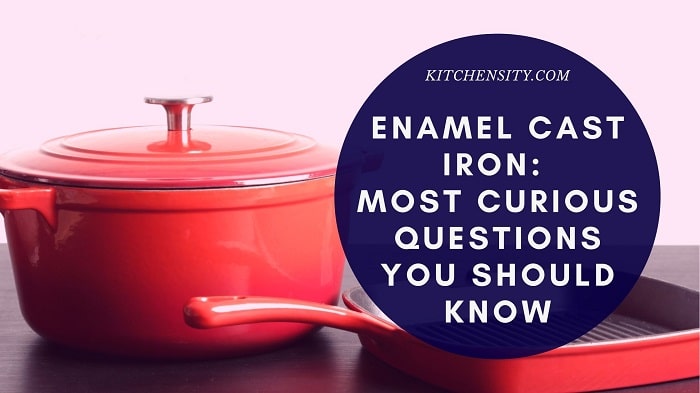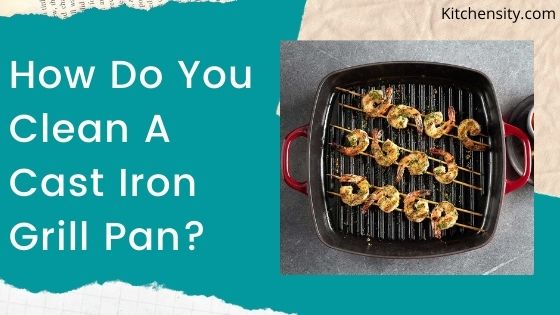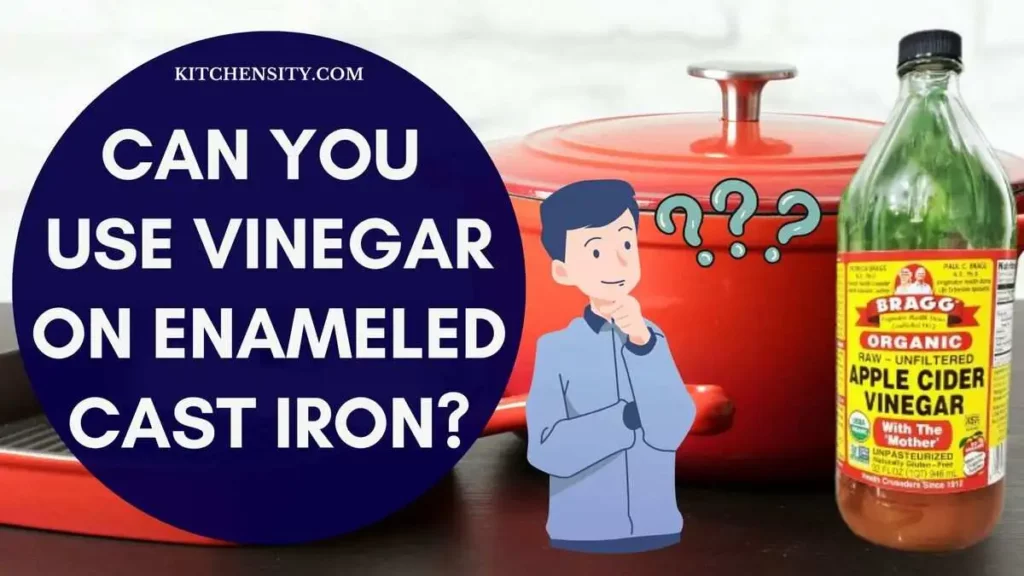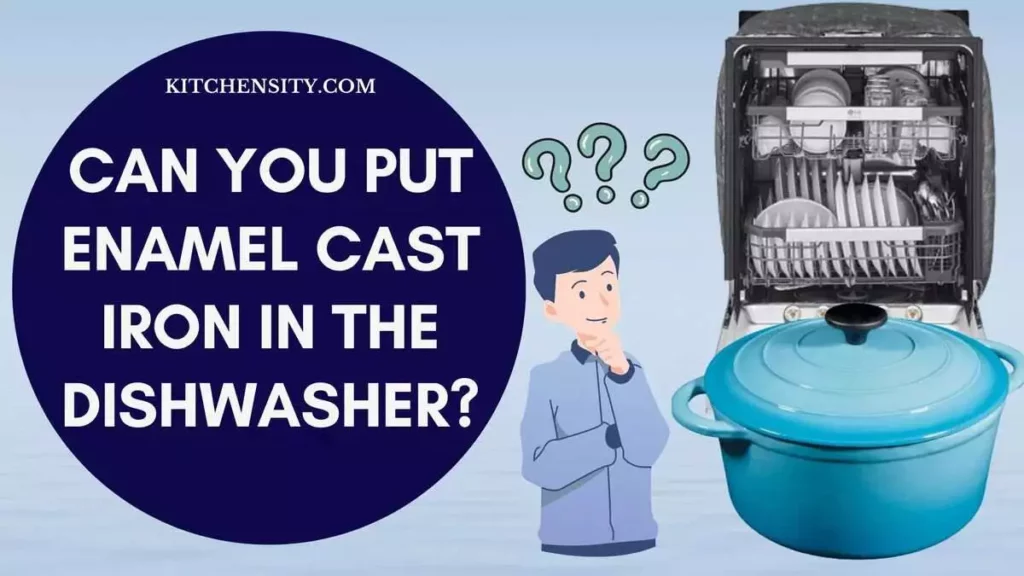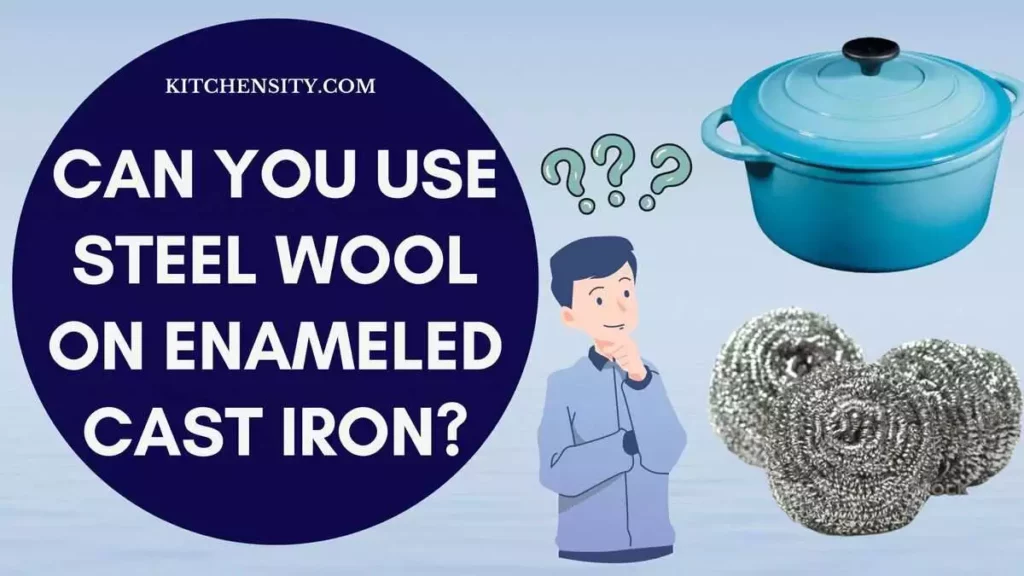Enameled cast iron is a type of cookware that combines the durability and heat retention of cast iron with the benefits of a non-reactive, easy-to-clean enamel coating.
It has become increasingly popular in kitchens due to its versatility and performance. However, many people are unsure about whether they can safely put enameled cast iron in the oven.
Understanding whether enameled cast iron can be used in the oven is crucial for home cooks and chefs alike.
An oven is a fundamental tool in the kitchen, and being able to utilize enameled cast iron cookware in this setting expands its potential uses and versatility.
Knowing the oven-safe capabilities of enameled cast iron allows individuals to confidently explore a wide range of recipes and cooking techniques, such as braising, roasting, baking, and more.
In this article, we will explore this topic in depth to provide clarity and guidance.
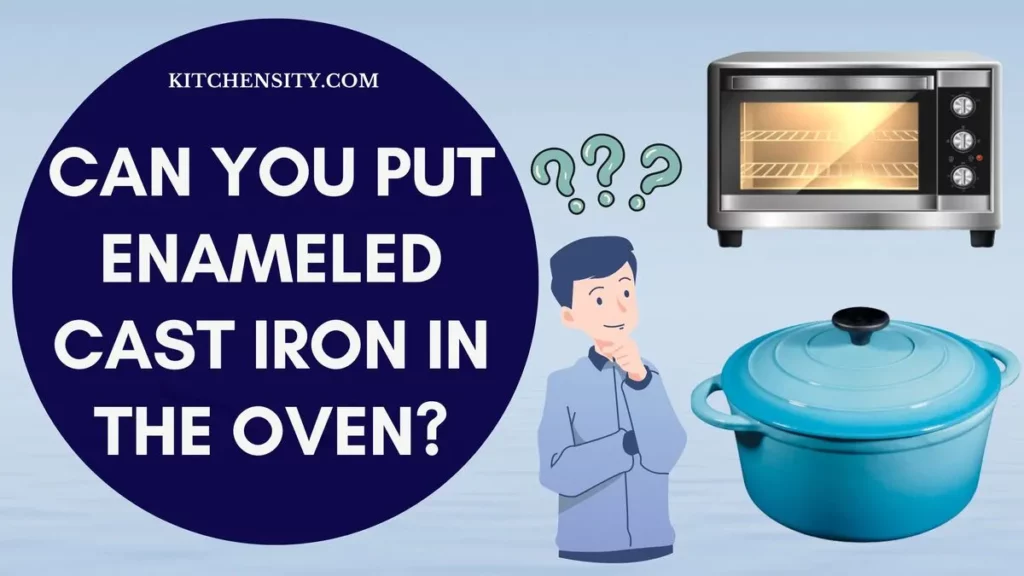
Table of Contents
- 1 Can You Put Enameled Cast Iron In The Oven?
- 2 Maximum Temperature Limits For Different Brands And Models
- 3 Factors To Consider When Determining Oven-Safe Temperature Of Enamel Cast Iron Cookware
- 4 Precautions For Using Enameled Cast Iron In The Oven
- 5 What Happens If You Overheat Enameled Cast Iron?
- 6 Can A Dutch Oven Go In The Oven?
- 7 Can Dutch Oven Go From Stove To Oven?
- 8 Final Verdict
- 9 YOU MAY ALSO LIKE
- 10 FAQs
- 10.1 Can Le Creuset Go In A 500 Degree Oven?
- 10.2 Can You Put A Dutch Oven In The Oven With The Lid On?
- 10.3 What Temperature Can You Put A Dutch Oven In The Oven?
- 10.4 Can Dutch Oven With Metal Handle Go In Oven?
- 10.5 What Is The Max Oven Temp For Enameled Cast Iron?
- 10.6 Can I Use Enameled Cast Iron In A Convection Oven?
- 10.7 Can I Put An Enameled Cast Iron Dutch Oven In The Oven At High Heat?
- 10.8 How Do I Avoid Damaging The Enamel When Using Enameled Cast Iron In The Oven?
- 10.9 Are There Any Specific Recipes That Work Best With Enameled Cast Iron In The Oven?
- 10.10 Can I Use Enameled Cast Iron In A Microwave?
- 10.11 Can Enameled Cast Iron Be Used For Both Stovetop Cooking And Oven Baking?
Can You Put Enameled Cast Iron In The Oven?
Yes, you can safely put enameled cast iron in the oven. It’s durable construction and enamel coating allow it to withstand high oven temperatures. This means you can confidently roast, bake, and even broil with your enameled cast iron cookware. Embrace the versatility and unleash your culinary creativity with oven-baked delights.
Also Read – Can You Use Vinegar On Enameled Cast Iron?
Maximum Temperature Limits For Different Brands And Models
The oven-safe temperature of enameled cast iron can vary depending on the brand and model of the cookware.
It is essential to refer to the manufacturer’s guidelines or instructions specific to your enameled cast iron piece. Generally, most enameled cast iron cookware can safely withstand temperatures up to 500°F (260°C) or higher.
However, it is crucial to note that different brands may have varying temperature limits due to differences in the enamel coating and construction of the cookware.
Always consult the manufacturer’s recommendations to ensure you do not exceed the recommended temperature range for your specific piece of enameled cast iron.
Here is a table comparing different brands with their maximum temperature limits:
| Brand | Maximum Temperature Limit |
|---|---|
| Le Creuset | 500°F (260°C) |
| Staub | 500°F (260°C) |
| Lodge | 500°F (260°C) |
| Cuisinart | 500°F (260°C) |
| Tramontina | 450°F (232°C) |
| Martha Stewart | 500°F (260°C) |
| Chasseur | 450°F (232°C) |
| Bruntmor | 500°F (260°C) |
| AmazonBasics | 400°F (204°C) |
| Mario Batali | 500°F (260°C) |
Note: It is crucial to consult the manufacturer’s guidelines or instructions for accurate and up-to-date information on the oven-safe temperature limits of your enameled cast iron cookware.
Also Read – Can You Use Steel Wool On Enameled Cast Iron?
Factors To Consider When Determining Oven-Safe Temperature Of Enamel Cast Iron Cookware
Several factors come into play when determining the oven-safe temperature for enameled cast iron cookware.
It is essential to consider these factors to ensure the longevity and performance of the cookware:
- Manufacturer’s Guidelines: As mentioned earlier, always consult the manufacturer’s guidelines or instructions provided with your enameled cast iron cookware. They will specify the maximum oven temperature limit for safe use.
- Quality Of The Enamel Coating: The quality of the enamel coating can vary between different brands and models. Higher-quality enamel coatings tend to withstand higher temperatures without chipping or cracking. Cheaper or lower-quality enamel may have lower temperature limits, so it is crucial to choose reputable brands known for their durable and high-temperature-resistant enamel coatings.
- Cookware Construction: The thickness and construction of the enameled cast iron can affect its ability to handle high oven temperatures. Thicker and heavier enameled cast iron pieces generally have better heat retention and can withstand higher oven temperatures. Conversely, thinner or lighter pieces may have lower temperature limits.
- Type Of Oven: Different types of ovens, such as conventional or convection ovens, may generate varying heat levels. It is important to consider the specific oven type and adjust the temperature accordingly based on the manufacturer’s recommendations.
By considering these factors and following the manufacturer’s guidelines, you can determine the appropriate oven-safe temperature for your enameled cast iron cookware, ensuring safe and optimal performance in the oven.
Also Read – Can You Put Enamel Cast Iron In The Dishwasher?
Precautions For Using Enameled Cast Iron In The Oven
While enameled cast iron is oven-safe, there are a few precautions you should take to ensure the longevity and performance of your cookware.
A. Avoiding Sudden Temperature Changes
One crucial precaution when using enameled cast iron in the oven is to avoid subjecting it to sudden temperature changes.
- Rapid temperature changes can cause thermal shock and potentially lead to the enamel coating cracking or chipping.
- To prevent this, it is recommended to allow the enameled cast iron cookware to gradually heat up or cool down along with the oven.
- For example, if you’re removing the cookware from a hot oven, place it on a heat-resistant surface or trivet rather than directly on a cold countertop.
B. Handling The Cookware With Oven Mitts Or Pot Holders
- Enameled cast iron cookware can become extremely hot when used in the oven.
- To protect yourself from burns or accidents, always use oven mitts or pot holders when handling the cookware.
- The handles and knobs of the cookware can also become hot, so make sure to use appropriate protection when touching these areas.
Also Read – Can You Use Enameled Cast Iron On A Glass Cooktop?
C. Choosing Appropriate Utensils To Avoid Damaging The Enamel
- When using enameled cast iron in the oven, it is essential to choose utensils that are suitable for use with the cookware.
- Metal utensils, such as stainless steel or cast iron, can scratch or chip the enamel coating.
- Instead, opt for utensils made of silicone, wood, or heat-resistant nylon to avoid damaging the enamel. These materials are gentle on the enamel surface and help maintain its integrity.
D. Not Broiling At High Heat
- While enameled cast iron is generally safe for oven use, it is not recommended to broil at high heat with this cookware.
- The intense heat generated by the broiler can exceed the temperature limits of the enamel coating, leading to potential damage.
- If you need to broil with enameled cast iron, use a lower broil setting or consult the manufacturer’s guidelines to determine the broiling limitations for your specific cookware.
Also Read – How To Clean A Cast Iron Grill Pan?
E. Regular Inspection For Any Damage
- It is essential to regularly inspect your enameled cast iron cookware for any signs of damage, such as chips or cracks in the enamel.
- If you notice any damage, it is advisable to discontinue using the cookware in the oven.
- Continued use with damaged enamel can compromise its performance and may result in further deterioration.
- Regular inspections help ensure the safety and longevity of your enameled cast iron cookware.
By following these precautions, you can use enameled cast iron in the oven safely and maintain the integrity of the enamel coating, allowing you to enjoy its benefits for years to come.
What Happens If You Overheat Enameled Cast Iron?
If you overheat enameled cast iron, it can lead to potential damage to the cookware. The enamel coating on the cast iron has a maximum temperature limit, and exceeding this limit can cause the enamel to chip, crack, or even melt. Overheating can also result in discoloration of the enamel and affect its overall appearance.
Furthermore, subjecting enameled cast iron to extreme temperatures can cause thermal shock, leading to the enamel coating separating from the cast iron base. This can compromise the integrity of the cookware and make it less effective in heat distribution.
To avoid these issues, it is important to follow the manufacturer’s guidelines regarding temperature limits and usage instructions for your specific enameled cast iron cookware.
By staying within the recommended temperature range, you can maintain the quality and longevity of your cookware while enjoying its excellent cooking performance.
Also Read – Why Does Food Stick To My Enamel Cast Iron?
Can A Dutch Oven Go In The Oven?
Yes, a Dutch oven is specifically designed to be used in the oven. It is a versatile piece of cookware that can withstand high temperatures and is suitable for both stovetop and oven cooking.
Dutch ovens are typically made of materials such as cast iron or enameled cast iron, which have excellent heat retention properties and can distribute heat evenly.
This means that when you place a Dutch oven in the oven, it will absorb and distribute heat evenly, resulting in consistent and thorough cooking.
- The Dutch oven’s ability to withstand high oven temperatures makes it ideal for a wide range of cooking techniques.
- You can use it for braising, where you sear meat on the stovetop and then transfer the Dutch oven to the oven to cook slowly in a flavorful liquid.
- It is also perfect for roasting, allowing you to achieve crispy and succulent results.
- Baking bread in a Dutch oven can give you a crusty exterior and a soft, fluffy interior.
- You can even use it for simmering soups, stews, and casseroles, letting the oven gently cook the ingredients to perfection.
The construction of a Dutch oven, whether it’s made of cast iron or enameled cast iron, ensures that it can handle the heat of the oven without warping or damaging the cookware.
The heavy lid of the Dutch oven helps to trap moisture and flavors, creating a moist and tender cooking environment for your dishes.
When using a Dutch oven in oven, it’s important to follow the manufacturer’s guidelines and recommendations regarding temperature limits and usage instructions.
Each Dutch oven may have specific guidelines, so it’s essential to consult the instruction manual or the manufacturer’s website for the most accurate and up-to-date information.
Also Read – Does Enamel Cast Iron Chip?
Can Dutch Oven Go From Stove To Oven?
Yes, a Dutch oven is designed to transition seamlessly from the stovetop to the oven. Its construction, typically made of materials like cast iron or enameled cast iron, allows it to withstand both stovetop and oven heat without any issues.
- When using a Dutch oven, you can start by heating it on the stovetop to sear, sauté, or brown your ingredients.
- This provides a great way to develop flavors and create a delicious base for your dishes.
- Once your stovetop cooking is complete, you can simply transfer the Dutch oven directly into the oven to continue the cooking process.
The Dutch oven’s ability to retain and distribute heat evenly allows it to excel in oven cooking.
Whether you’re roasting, baking, or slow-cooking, the Dutch oven ensures consistent and thorough heat circulation, resulting in flavorful and tender dishes.
- It’s important to note that when transferring a Dutch oven from the stovetop to the oven, you should use oven mitts or pot holders to protect your hands from the hot handle or lid.
- Additionally, always ensure that you follow the specific guidelines and temperature limits provided by the manufacturer for your particular Dutch oven to ensure safe and optimal usage.
Also Read: How To Season And Clean Cast Iron Cookware?
Final Verdict
In conclusion, enameled cast iron can indeed be safely used in the oven, making it a versatile and reliable cookware option.
With its ability to withstand high temperatures, enameled cast iron allows for a wide range of cooking techniques, from roasting and baking to braising and simmering.
By following the manufacturer’s guidelines and temperature limits specific to your cookware, you can confidently explore the world of oven-cooked meals and enjoy the exceptional heat retention and even heat distribution that enameled cast iron provides.
So go ahead, unleash your culinary creativity, and let your enameled cast iron shine in the oven as you create delicious and flavorful dishes for yourself and your loved ones.
YOU MAY ALSO LIKE
- Is Enameled Cast Iron Cookware Safe?
- Cast Iron Skillet Gift Basket Ideas
- Do You Need To Season Enameled Cast Iron?
- Best Enameled Cast Iron Cookware Sets
- Best Cast Iron Pots And Pans Set
- How To Season And Clean Cast Iron Cookware?
- How Many Quarts In An 8×8 Pan?
- How Many Quarts Are In A 9×9 Pan?
- How Many Quarts In A 9×13 Pan?
- Skillet Vs Frying Pan Vs Sauté Pan
FAQs
-
Can Le Creuset Go In A 500 Degree Oven?
Yes, Le Creuset cookware can safely go in a 500-degree oven.
-
Can You Put A Dutch Oven In The Oven With The Lid On?
Yes, you can put a Dutch oven in the oven with the lid on.
-
What Temperature Can You Put A Dutch Oven In The Oven?
A Dutch oven can typically be used in the oven at temperatures up to 500 degrees Fahrenheit (260 degrees Celsius).
-
Can Dutch Oven With Metal Handle Go In Oven?
A Dutch oven with a metal handle is usually oven-safe, but it’s essential to check the manufacturer’s guidelines for specific temperature limits.
-
What Is The Max Oven Temp For Enameled Cast Iron?
The maximum oven temperature for enameled cast iron can vary depending on the brand and model, but most can withstand temperatures up to 500 degrees Fahrenheit (260 degrees Celsius).
-
Can I Use Enameled Cast Iron In A Convection Oven?
Yes, enameled cast iron is safe to use in a convection oven. Just ensure that the cookware is compatible with the oven’s temperature range and follow the manufacturer’s guidelines.
-
Can I Put An Enameled Cast Iron Dutch Oven In The Oven At High Heat?
Most enameled cast iron Dutch ovens are designed to withstand high heat, but it’s essential to check the specific temperature limits provided by the manufacturer. Avoid subjecting the cookware to extreme temperature changes.
-
How Do I Avoid Damaging The Enamel When Using Enameled Cast Iron In The Oven?
To avoid damaging the enamel when using enameled cast iron in the oven, handle the cookware with care, avoid sudden temperature changes, use appropriate utensils that won’t scratch the enamel, and follow the manufacturer’s guidelines for oven-safe temperature limits.
-
Are There Any Specific Recipes That Work Best With Enameled Cast Iron In The Oven?
Numerous recipes work exceptionally well with enameled cast iron in the oven, such as braised meats, casseroles, bread baking, and even desserts like cobblers or fruit crisps.
-
Can I Use Enameled Cast Iron In A Microwave?
No, enameled cast iron should not be used in a microwave as the intense heat generated can damage the enamel coating and potentially cause the cookware to crack or warp.
-
Can Enameled Cast Iron Be Used For Both Stovetop Cooking And Oven Baking?
Yes, enameled cast iron can be used for both stovetop cooking and oven baking. Its versatility allows for a seamless transition between the stovetop and oven, making it an excellent choice for various cooking techniques and recipes.
Katrina Smith is a seasoned expert with over 25 years of experience in all things related to cooking and the kitchen. As an avid cook and kitchen enthusiast, she is passionate about sharing her knowledge and expertise on cookware, kitchen appliances, kitchen tips, and kitchen staples.
Through her articles and reviews, Katrina aims to inspire and help others improve their cooking skills, experiment with different ingredients, and invest in quality cookware and appliances.

![How To Season And Clean Cast Iron Cookware? [4 Effective Ways] 3 How To Season And Clean Cast Iron Cookware](https://www.kitchensity.com/wp-content/uploads/2020/06/How-To-Season-And-Clean-Cast-Iron-Cookware.jpg)
